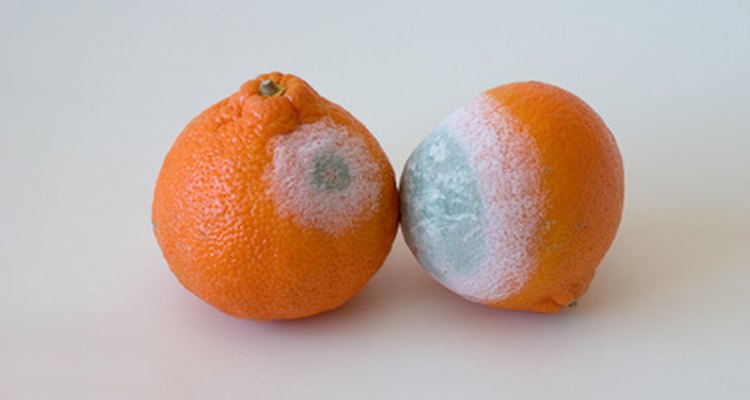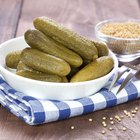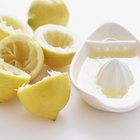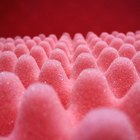
Food preservation is primarily aimed at minimizing food decay caused due by microorganisms. Perishable food items like fruits, vegetables and grains need special storage techniques to increase their shelf life. Technological advancements have led to development of several food preservation processes and techniques using carbon dioxide. These include cryogenic freezing, controlled atmospheres and modified atmosphere packaging.
Food Preservation and Shelf Life
Fruits and vegetables, being composed of organic materials, are perishable and have a limited shelf life. The term "shelf life" is the time span from the moment fruits and vegetables are plucked to the moment they are fit for consumption. They undergo permanent changes with passing time, after which, they are no longer considered fit for eating. Using food preservation processes helps in extending the shelf life of foods.
Factors Responsible for Spoilage
Factors responsible for spoilage of fruits and vegetables vary with the conditions of storage. The major factors that affect food spoilage include water activity, exposure to light and oxygen, pH, temperature and chemicals inherent in the food item. Often, several factors act together and the cumulative impact results in complete decay of the food item.
Cryogenic Freezers
Cryogenic freezing is a comparatively newer method of preserving food. In this method, the food is exposed to liquefied gases such as carbon dioxide and nitrogen at a temperature below -76 degrees Fahrenheit (–60 degrees Celsius). Carbon dioxide in liquefied form is sprayed over the food for preservation. During cryogenic freezing, around half of the solid carbon dioxide sublimes into the gaseous state. The heat required to convert solid carbon dioxide into gas is drawn from the food items, thus cooling them further in the process. The cryogenic freezers are small in size and portable. They are ideal for storage and transportation of fresh produce from the fields to the packaging units.
Controlled Atmosphere
Controlled atmosphere (CA) is another method that uses carbon dioxide as one of the preservatives. Here the fruits and vegetables are stored in specific conditions governed by low temperature, level of oxygen and carbon dioxide at high humidity. In particular, the concentration of carbon dioxide is reduced and that of oxygen is increased. Food is preserved by suppressing the action of hormone ethylene, which plays a major role in ripening of fruits and vegetables.
Another process similar to controlled atmosphere is modified atmosphere packaging (MAP), where gaseous atmosphere is modified while packing the food to slow down the process of ripening. The method uses low-density polyethylene as packing material.
Carbon Dioxide Levels
The food preservation processes based on carbon dioxide level use the property that increases level of carbon dioxide decreases the ethylene concentration. Enriched carbon dioxide levels significantly reduce respiration, hinder textural softening and slow down the biological processes associated with ripening. To use these methods of preservation, determine the specific tolerance levels of fruits and vegetables. For instance, for CA preservation of avocado, the optimum level of oxygen is two to three percent and that of carbon dioxide is three to 10 percent. Similarly, MAP requires three to eight percent of carbon dioxide and two to five percent oxygen for storage of fruits and vegetables. There is no one setting suitable for all types of produce, and the level of carbon dioxide is determined based on stage of maturity, cultivation pattern and environmental condition in the region.
Related Articles

How Does Flash Pasteurization Work?

What Foods Provide Calcium D-Glucarate?

How to Preserve Rutabagas

How to Freeze Lentils

How Are Strawberries Processed?

The Advantages of Pickling Foods

Different Types of Fruits & Vegetables

The Disadvantages of Vermicompost

How to Freeze Chunks of Butternut Squash

Strontium-Rich Foods

Hydroponic Vegetable Nutrients Vs. ...

Why Does Lemon Juice Stop Apples From ...

Ingredients in Restylane

What Are the Functions of Pectin in ...

Plastic Recycling Levels

Types of Biodegradable Products

Does Yeast Cause Holes in Bread?

What Types of Foam Can Be Recycled?

Uses of Macadamia Nut Shells

Heating Foods in Plastic & BPA
References
Resources
Writer Bio
Based in Winnipeg, Aruna Murthy Anaparti began writing in June 2002. Her work appears on eHow and Answerbag, primarily focusing on topics related to environment, medical issues, health, fitness and careers. She is also a gold medalist. She holds a postgraduate degree in environmental sciences from the Bharati Vidyapeeth Institute of Environmental Education and Research.
Photo Credits
fungus on ortaniques image by GeoM from Fotolia.com